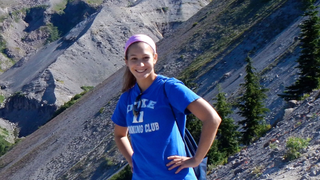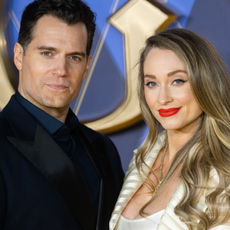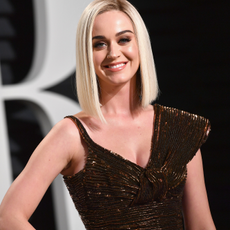

Once upon a time, women weren't allowed to even think of becoming an astronaut, but now one New York-area woman could be headed to live on Mars.
Laurel Kaye, 21, took countless childhood trips to the Hayden Planetarium at the American Museum of Natural History, hoping one day to become an astronaut. Now, she's one of 100 finalists vying for a spot on the crafts headed into outer space.

Dutch entrepreneur Bas Lansdorp founded Mars One in 2011. The mission: to colonize the red planet of Mars with eight people by the year 2028. While this sounds like plot of some epic sci-fi film, it's very real—but there are a few snags sparking controversy.
The biggest one? All of the space travelers selected and sent on the mission will never be able to return home.
Wait, what?!
Yes, you read that right. The current cost for a one-way trip is an estimated six billion dollars. Including a return trip would hike the budget to an estimated $90 billion according to NASA. Currently, Mars One has hardly raised 0.6 percent of the one-way budget.
That means selected space cadets must say adieu to Earth commodities and hello to space-food-in-a-tube. Forever.
Stay In The Know
Marie Claire email subscribers get intel on fashion and beauty trends, hot-off-the-press celebrity news, and more. Sign up here.
And while Mars One applicants are eager to head to space, they have yet to undergo rigorous mental and physical training like that of NASA astronauts. Twenty-four hopefuls will advance to the final round where they will train in a simulated Martian environment, likely some polar vortex hinterland, considering nightly temperatures on Mars can plummet to minus 100 degrees Fahrenheit. *Brrr*
Despite all of these drawbacks, Kaye is ready to take the mission by the horns. "I don't see myself as dying on Mars. I see myself as living on Mars," she told the New York Daily News.
While the future of Mars One looks pretty bleak, the potential is enough to keep hope alive. "Whether it succeeds or fails, we stand to learn so much from something like this," Kaye said. "At some point you just have to be the first person to do something. Otherwise nothing is going to happen."
Right on, girl.
You should also check out:
How American Apparel's First Female CEO Is Changing Everything
Simedar Jackson is an esthetician, content creator, and lover of sci-fi fiction living in Brooklyn, New York. She is passionate about creating space for Black and Brown people in the beauty and wellness industries by providing access to culturally nuanced education and services that meet their needs. You can find them doing their skincare routine, reminding friends to reapply SPF, and watching reruns of Love Island.
-
 Charli D'Amelio Says Kim Kardashian "Inspired" Her to Work on Prison Reform
Charli D'Amelio Says Kim Kardashian "Inspired" Her to Work on Prison ReformThe social media star has partnered with REFORM Alliance.
By Iris Goldsztajn Published
-
 Henry Cavill and His Girlfriend Natalie Viscuso Are Expecting Their First Child
Henry Cavill and His Girlfriend Natalie Viscuso Are Expecting Their First ChildCongratulations are in order!
By Iris Goldsztajn Published
-
 Katy Perry's Top Almost Came All the Way Off on 'American Idol'
Katy Perry's Top Almost Came All the Way Off on 'American Idol'LOL.
By Iris Goldsztajn Published
-
 Almost Famous
Almost FamousHalf of the Shondaland dream team, the woman whose work brings 'Bridgerton' to life, is one of the most influential producers in Hollywood. And she’s ready for everyone to know it.
By Jessica M. Goldstein Published
-
 Payal Kadakia Is Finally Sharing Her Secret Sauce to Success
Payal Kadakia Is Finally Sharing Her Secret Sauce to SuccessIn her new book, LifePass, the ClassPass founder gives you the tools to write your own success story.
By Neha Prakash Published
-
 The Power Issue
The Power IssueOur November issue is all about power—having it, embracing it, and dressing for it.
By Marie Claire Editors Published
-
 J. Smith-Cameron Is in Control
J. Smith-Cameron Is in ControlShe’s Logan Roy’s right hand. She’s Roman’s ‘mommy girlfriend.’ And she’s a fan favorite. Here, the Succession star takes us behind the scenes of Gerri’s boardroom power plays.
By Jessica M. Goldstein Published
-
 What Makes an Olympic Moment?
What Makes an Olympic Moment?In the past it meant overcoming struggle...and winning. But why must athletes suffer to be inspiring?
By Megan DiTrolio Published
-
 'The Other Black Girl' Gets Real About Racism in the Workplace
'The Other Black Girl' Gets Real About Racism in the Workplace"It really hits home how many spaces don’t allow Black women to really show up as their authentic selves."
By Rachel Epstein Published
-
 Melissa Moore's 'Life After Happy Face' Podcast Looks at Killers Through New Eyes
Melissa Moore's 'Life After Happy Face' Podcast Looks at Killers Through New EyesThe true crime expert and daughter of the Happy Face Killer opens up to Marie Claire about destigmatizing the label of 'criminal's kid.'
By Maria Ricapito Published
-
 Simone Biles on Her GOAT Leotard: Don't Be Ashamed of Being Great
Simone Biles on Her GOAT Leotard: Don't Be Ashamed of Being GreatThe world's greatest gymnast shares how she takes care of her mental health, the road to Tokyo, and the story behind her epic new leotard style.
By Megan DiTrolio Published